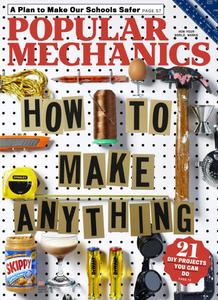 At this point I’ve probably read hundreds of articles on school safety and security, and written dozens of blog posts and articles on the topic myself. Many of the articles written by others have advocated for increased security without considering all of the potential consequences of ignoring the code requirements that help to ensure life safety. The other day someone told me that he was happy to hear my voice on the phone because it meant that I had not yet imploded in frustration over non-code-compliant retrofit security devices.
At this point I’ve probably read hundreds of articles on school safety and security, and written dozens of blog posts and articles on the topic myself. Many of the articles written by others have advocated for increased security without considering all of the potential consequences of ignoring the code requirements that help to ensure life safety. The other day someone told me that he was happy to hear my voice on the phone because it meant that I had not yet imploded in frustration over non-code-compliant retrofit security devices.
When I heard that Popular Mechanics had published a guide to school safety, I have to be honest – I braced myself for more of the same. BUT – I was very pleasantly surprised. The Popular Mechanics Guide to Safer Schools is a great piece, and with a circulation of more than 1.2 million readers, this information can reach the masses.
With respect to physical security and retrofit devices, the guide shares this advice (and much more!):
Don’t Invest Until You Know What You’re Buying—And Whether It’s Even Legal
After every school shooting, some security companies immediately start calling school districts trying to sell them all kinds of safety-related products—some worthwhile, some worthless, some of which are total overkill. In 2015, Southwest Licking Local School District in Ohio set off a statewide debate when parents raised and spent $30,000 on barricade devices to be used in classrooms. The problem: The devices were found to violate building and fire codes and the Americans with Disabilities Act. The devices sat unused in closets for more than a year while outraged parents battled with the Ohio building standards board. State lawmakers eventually approved the devices, over the objections of the board, the local fire marshal, and the Ohio Disability Rights Law and Policy Center. Among the board’s objections: The devices could cause difficulties for first responders; they could be used to trap students in classrooms; and the devices themselves were “unlisted, unlabeled, and untested.”
It was so refreshing to see accurate reporting on this issue. In each of the 3 states where state legislators have voted to allow barricade devices (Ohio, Utah, and Arkansas), they did so in spite of the very vocal concerns of the code officials (and others). The code-enforcement community has decades of experience with life safety and fire prevention. Why would anyone who is trying to improve school safety and security ignore the issues raised by such a knowledgeable group?
I urge you to read the guide and share it with those who would benefit from this information. The downloadable PDF includes 14 pages of articles including an in-depth look at today’s security at Columbine High School and Sandy Hook Elementary School. There is a high-resolution copy here if you’d like to print it out.
Cover Graphic: Popular Mechanics
~~~
If you’re in Southern California, the DHI-SOCAL chapter’s 2018 golf tournament is coming up on October 3rd! The tournament will be held at the Black Gold Golf Club in Yorba Linda. Sign up here, and “Swing to promote local Door and Hardware Education!”
You need to login or register to bookmark/favorite this content.





Great article. Thanks
As a fan of clear, concise writing (yours included Lori), I thought the Popular Mechanics article was great.
In May last year, I learned that Popular Mechanics is home to some excellent writing, so I am not surprised they did well on this subject.
It is completely off-topic to hardware, but here is a link to the PM article which caused me to realize how good they were. It is about the state of the art in the fight against cancer, and I haven’t stopped sharing about it for over a year. The article is clear, comprehensive, and inspirational. It will take a while to read, but it is worth it in my opinion.
https://www.popularmechanics.com/science/health/a26290/we-will-beat-cancer/
Thanks Tom!
– Lori
[…] September 2018, Lori Greene of iDigHardware shared a guide to safer schools from Popular Mechanics. The guide discusses how to make buildings more secure – the right way, that is in […]